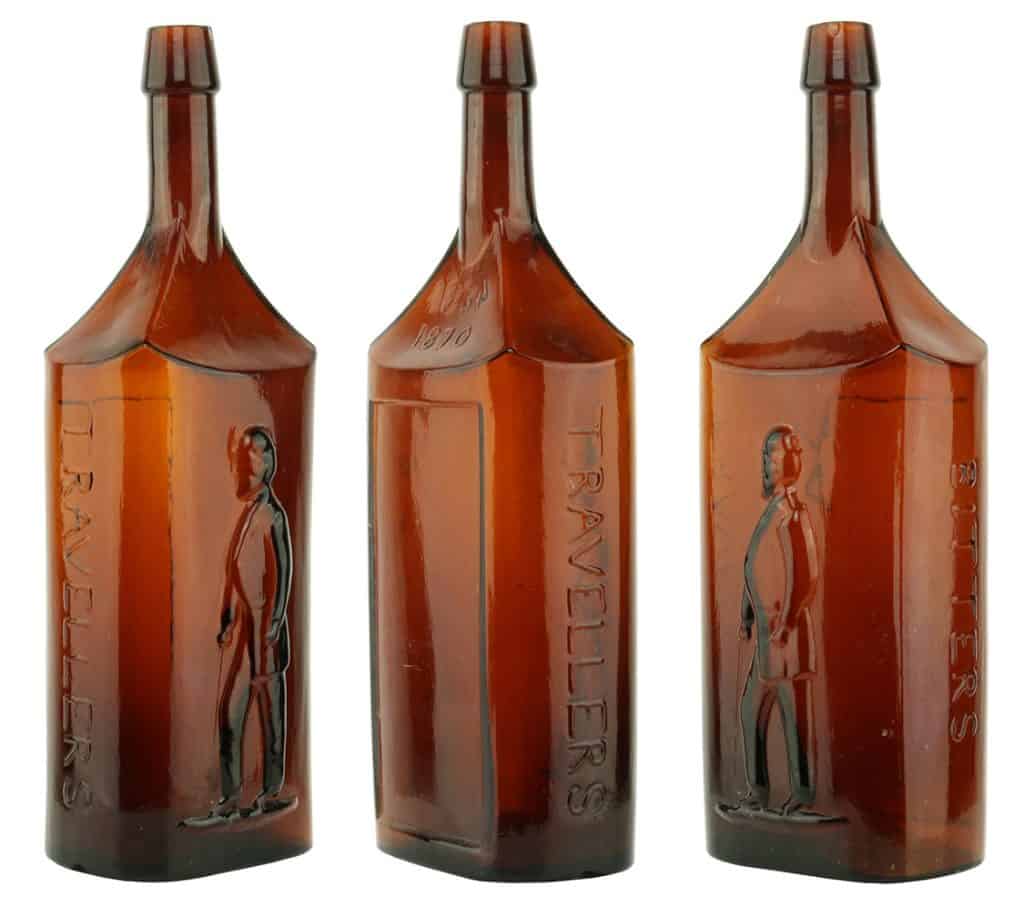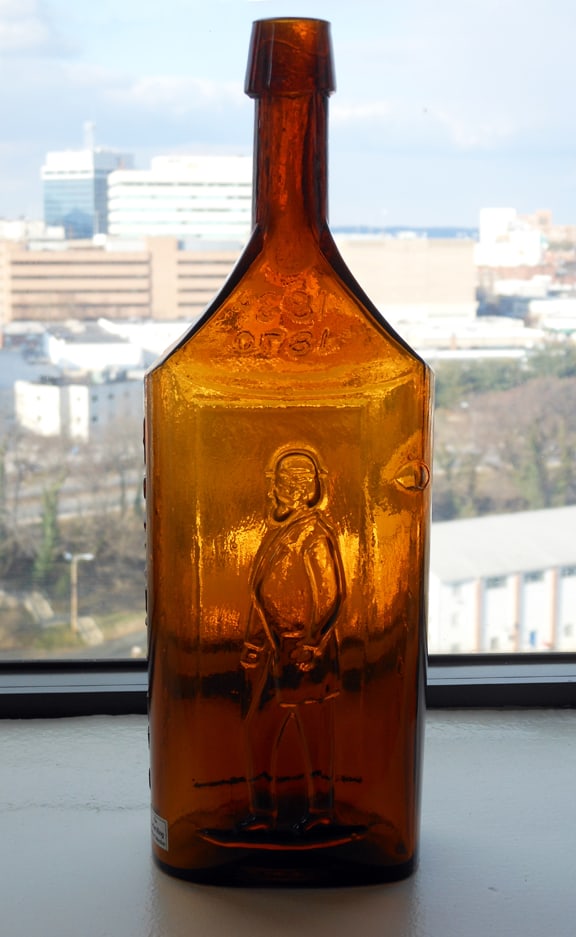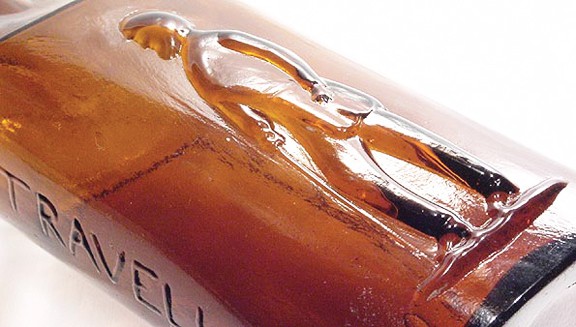Travellers Bitters Travels from Baltimore to Carmel
08 March 2012 (R•o52914) (R•061617) (R•032019)
![]() Jerry Forbes, my good friend, table-mate and bitters collector from Big Sur, California scored big when he purchased a very rare Travellers Bitters at the Baltimore Antique Bottle Show this past weekend. Not only was the example stuning, it was most likely the nicest example I have seen with great glass character and it was also ex: Carlyn Ring. Way to go Jerry! I have posted pictures of Jerry’s bottles taken in his hotel room after the show along with pictures of my example.
Jerry Forbes, my good friend, table-mate and bitters collector from Big Sur, California scored big when he purchased a very rare Travellers Bitters at the Baltimore Antique Bottle Show this past weekend. Not only was the example stuning, it was most likely the nicest example I have seen with great glass character and it was also ex: Carlyn Ring. Way to go Jerry! I have posted pictures of Jerry’s bottles taken in his hotel room after the show along with pictures of my example.
T 54 Travellers Bitters
motif traveling man seen in profile with cane, headed left // TRAVELLERS // sp // BITTERS // // s // f // // f // 1834 / 1870 // f //
10 1/2 x 3 1/2 x 2 (6 1/4)
Rectangular, Amber, LTC, Applied mouth, Very rare
(man on bottle resembles figures on Pike’s Peak flasks, Heckler notes Robert E. Lee with Walking Stick)
(Motif Robert E. Lee with a cane) – TRAVELLERS – BITTERS – 1834 / 1870” (on shoulder), (T-54), American, ca. 1870 – 1875, For years it was thought the ‘traveler’ on the front of this bottle was just a man ‘traveling’, like on the Pike’s Peak flasks. We suggest a more likely possibility. We believe the man on the front of the bottle is the famous Confederate General, Robert E. Lee. The bottle has three clues’ that make us think this. The first clue is the hat, beard and coat. All are identical to how Lee appears on a number of pictures and drawing done during the Civil War. None of the Pike’s Peak traveler’s has a beard. The second clue is on one of the side panels. It is the word ‘Travellers’, spelled with two ‘L’s’. Possibly an error made by the mold maker? We don’t think so. During the course of the Civil War General Lee rode several horses, the last one, and his favorite he named ‘Traveller’, with two ‘L’s’. The third clue is the two dates embossed on the back shoulder panel, ‘1834’ and ‘1870’. The 1834 date seems insignificant. It was the year that Lee was assigned a position as an assistant in the chief engineer’s office in Washington, D.C. The 1870 date is of considerably more importance. That was the year Robert E. Lee died.

TRAVELLERS BITTERS – Meyer Collection (Three of 36 rotational images taken by Alan DeMaison for the Virtual Museum)

“TRAVELLER’S” – (Standing figure of General Robert E. Lee) – “BITTERS” – 1834 / 1870″, America, 1870 – 1875. Bright, yellowish-honey coloration, rectangular with rounded corners, applied sloping collar – smooth base, ht. 10 ¼”; (a tiny little pinhead flake on the back edge of the lip, otherwise sparkling attic mint). R/H #T54. A gorgeous example, probably the lightest in color that we can recall seeing, historical, eye-appealing, and rare! Provenance: Joe Kray collection. – American Glass Gallery | Auction #22














